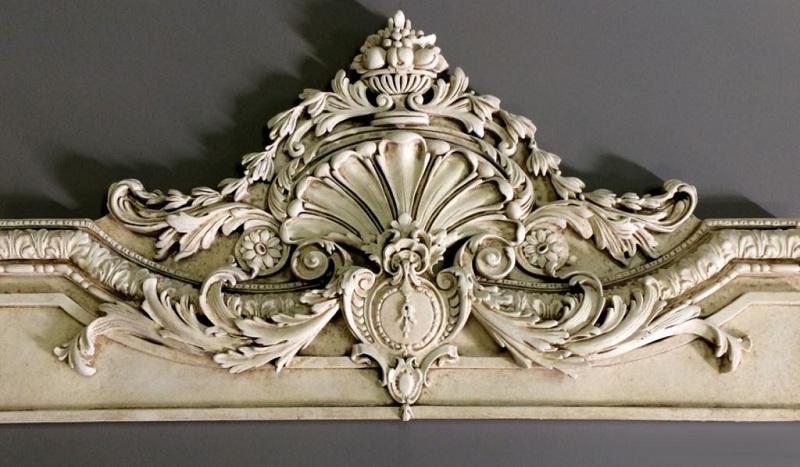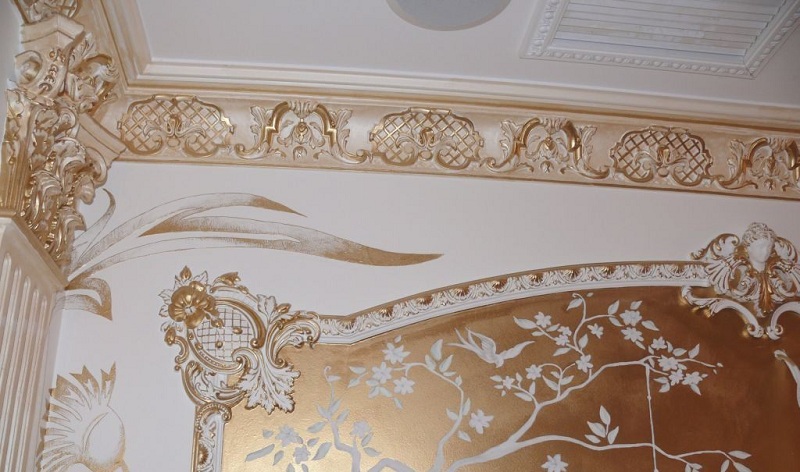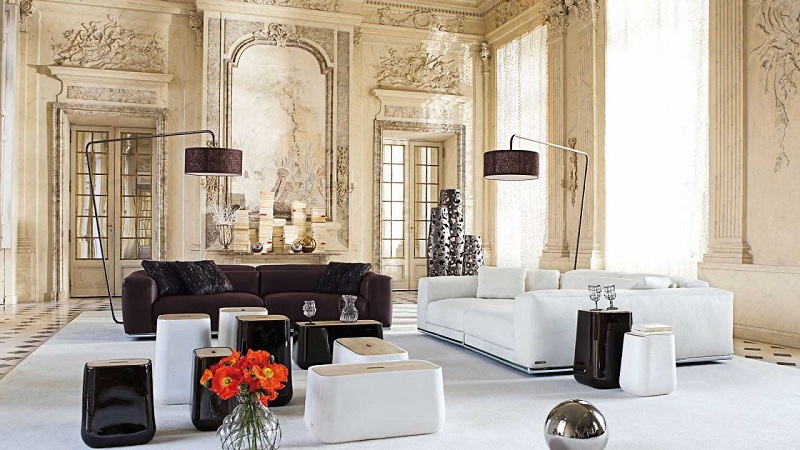The interior in the style of classic, baroque, art nouveau cannot be imagined without elegant stucco on the walls. Stucco can be bought by ordering high-strength products made of polyurethane, but if you want to enjoy the composition of natural gypsum, you can create it with your own hands.

What is polyurethane moldings?
Stucco molding on the walls is quite expensive, so modern manufacturers offer customers a budget option made from polyurethane. The advantages of products made of polyurethane include:
- low weight;
- a huge selection of forms and tinting options;
- low price;
- resistance to humidity, frost;
- beautiful decorative features.

The decor of polyurethane will serve you for 5-10 years. Products can be painted in any shade to increase their attractiveness and level of protection against moisture!
Installation of polyurethane stucco on the wall
To fix this decor on the walls and ceiling is very simple:
- choose a suitable stucco, soak it in the apartment for a day, so that the material adapts to the temperature regime;
- at this time level the surface, cover them with plaster;
- cut the stucco using a small hand saw;
- clean the cut-off area using ordinary sandpaper;
- Apply glue to the back side of each element, choose the one that can be used to install polyurethane;
- gently attach the polyurethane products to the surface, press it lightly, remove excess glue with a thin spatula;
- in a day make painting or painting. For tinting you can use the technique of aging, gilding, texturing, focusing on the interior design.
Stuccoing on the walls in the interior looks just great but remembers that manufacturers recommend installing products from polyurethane before finishing.

Is it possible to create stucco for the walls with your own hands?
Yes, you can create stucco using cement, plaster or silicone. Now we will tell you about the easiest way!
Beautiful stucco from ordinary clay – instructions with photos
The decoration of the premises with such stucco is a simple and budget option suitable for people who do not want to create decorative elements for days. Products will not be too neat, so the method is best used to create such decorative elements as flowers, patterns, small angels. For work you will need:
- ordinary clay, the amount depends on the size of stucco;
- polymer glue;
- 5 kg of plaster and about 1 liter of pure water.

Form creation
Take plasticine, create from it the necessary decorative elements. Now put the elements on the table, it is better to use an unnecessary board, because the future stucco will have to be poured with polymer glue. Make sure that the entire surface of the plasticine product is covered with glue, if after applying the first layer you notice that the glue is too small, then repeat the procedure.

Tip! To create stucco, you can use purchased forms made from silicone. They are sold in stores where goods for handicrafts, cooking and soap making are presented. Such forms before pouring gypsum must be well smeared with soapy water.
Creating blanks
Prepare a gypsum mortar by mixing 1.5 kg of the dry mix with 1 liter of water; you can add a little PVA construction glue dissolved in water, which will slow down the hardening process. If you use hot water, the mixture can lose plasticity for 8-10 minutes, so work quickly. If there are many blanks, then prepare a small amount of gypsum; the consistency of the solution should resemble thick sour cream.
- From the resulting adhesive form, remove all the clay. The form will be quite flexible, so do not be afraid to damage it. If you use silicone molds, then apply a thick soap solution on their surface so that the plaster products do not stick.
- Cover the forms with plaster using a brush, and then pour the liquid mixture into them. The thickness of the layer should not exceed 1 cm; if your product is large, pour plaster in layers, waiting for the previous one to dry.
- When pouring a new layer, shake the mold to remove air bubbles from it.
- The average time of solidification of gypsum is 15-20 minutes, after this period the workpiece can be removed from the forms, they need to be corrected using sandpaper!

It is worth remembering that the back of the elements of stucco good ground, which helps to improve the quality of its adhesion to the surface. After the elements harden, you can apply several layers of water-based paint on them, which will protect products from moisture, decorate them with a pattern using acrylic-based compositions.
How to install stucco on the walls?
It is possible to glue the stucco on the walls in 2 days using ordinary PVA mounting glue, having previously moistened the surface of the blanks. Before installation, gypsum products should be re-treated with emery paper to give them evenness, after which it is necessary to mark the walls, moisten the base with water, and lubricate the PVA.

Prepared blanks are carefully attached to the wall, they need to be rubbed into it with soft movements, and the method is suitable for molding small sizes. Mounting massive stucco on the walls and ceiling, use screws, because if the element disappears, it can injure someone. Use a soft cloth to remove excess glue, mask the joints between the elements of stucco with plaster mortar or paint. Moldings are not recommended to glue on the wallpaper.
You will spend a maximum of 2-3 days on all the works, but the created interior will look perfect and very expensive!

